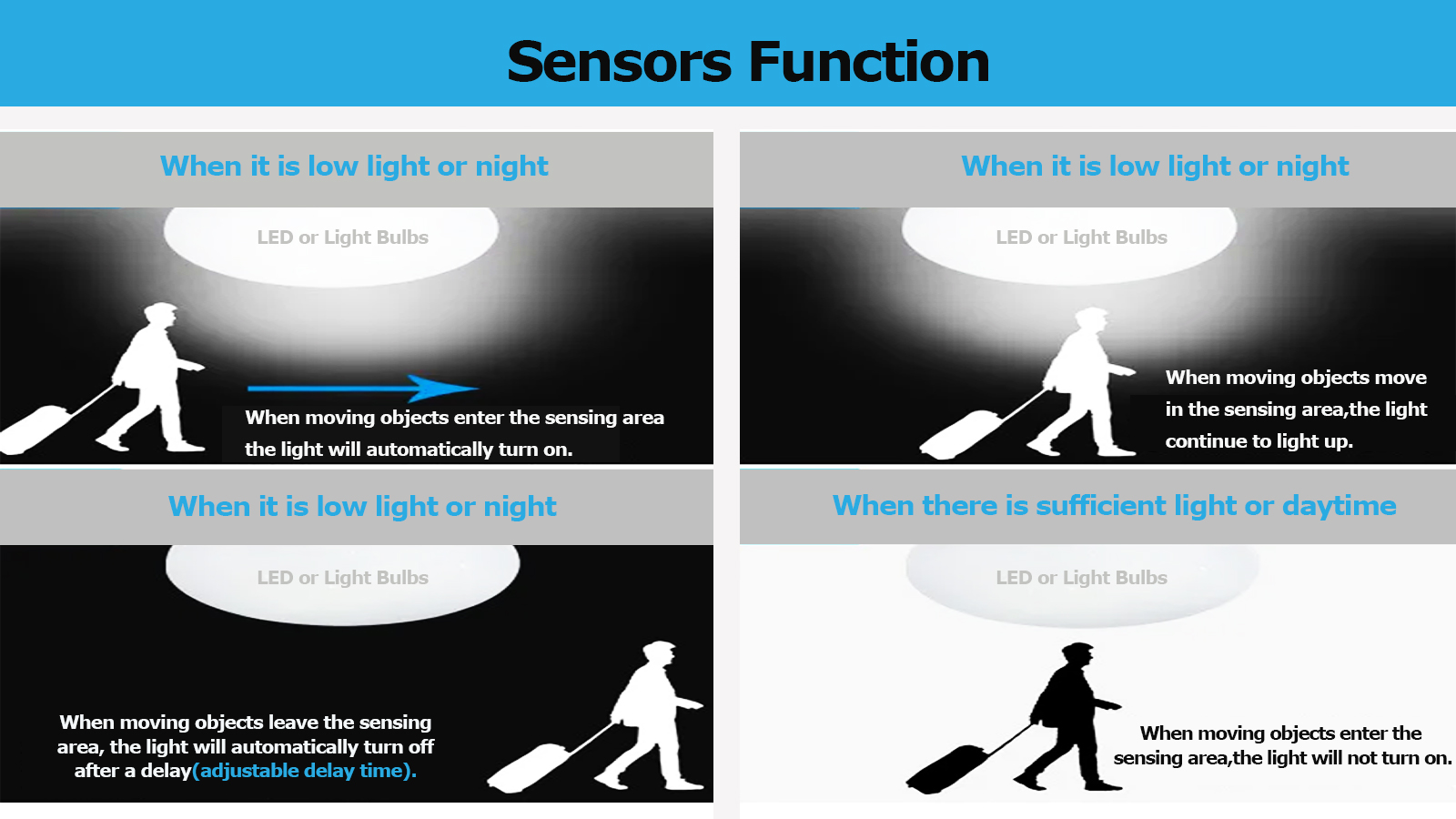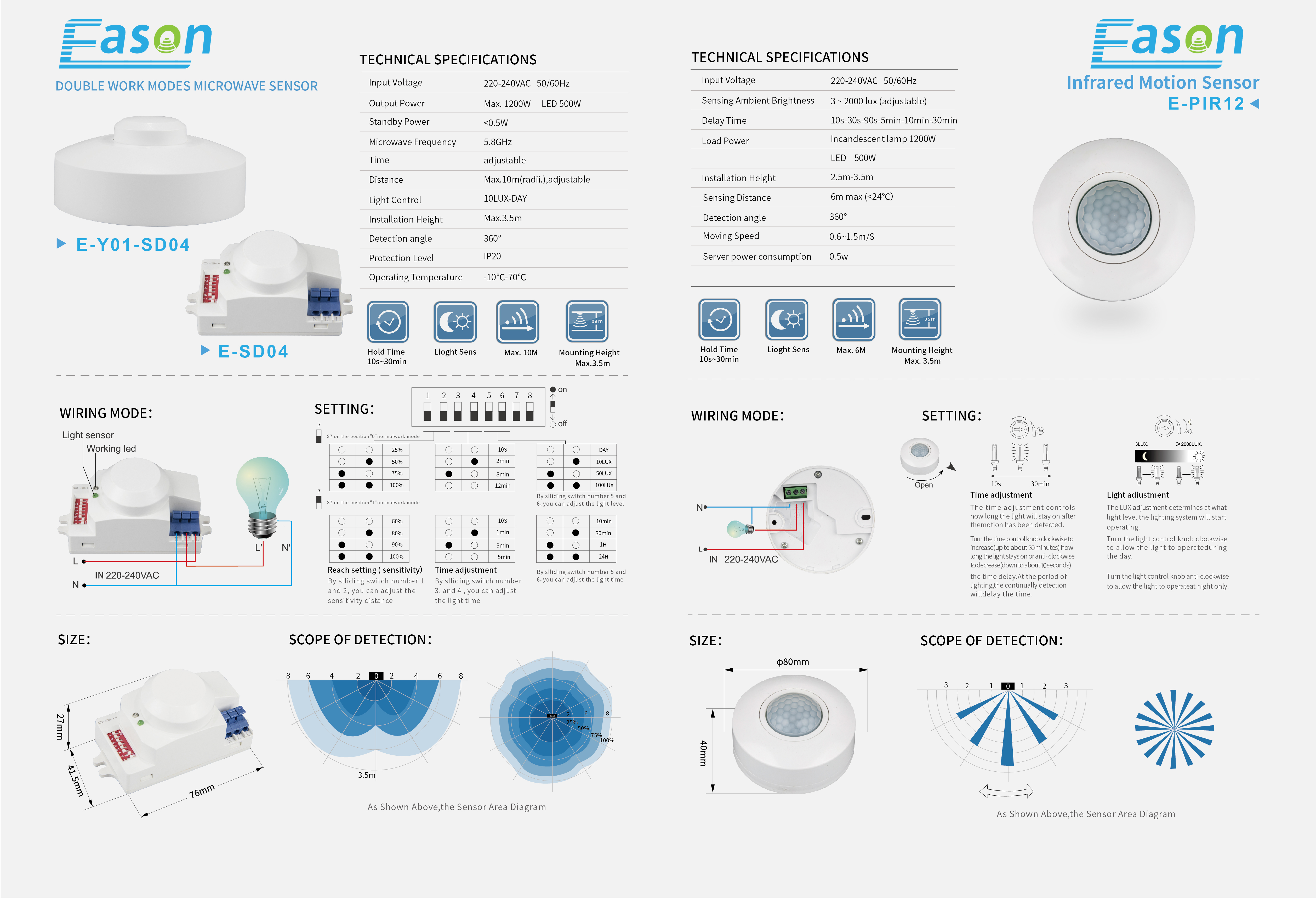What is a microwave sensor? What is its working principle? What are its applications?
Article Catalog
1. What is a Microwave sensor?
2. How does the microwave working principle work?
3. Where are the applications of microwave sensors?
4. Differences with PIR Sensors?
(3) Environmental Adaptability
In the era of rapid technological advancement, the demand for smart living is becoming increasingly urgent, and microwave sensors are emerging as a prominent player in smart technology. This article will delve into the working principles and application scenarios of microwave sensors, comparing their usage scenarios with PIR sensors and discussing factors to consider when making practical choices.
1. What is a Microwave sensor?
Microwave sensors are intelligent devices that use microwave radiation to perceive the surrounding environment. Unlike PIR sensors, microwave sensors use microwave signals that can penetrate objects, making them more versatile in certain scenarios.
2. How does the microwave working principle work?
The working principle of microwave sensors is based on the emission and reception of microwave signals. When an object enters their detection range, the microwave signal is reflected back to the sensor, triggering a corresponding response, such as activating lighting devices. Due to the penetrating nature of microwave signals, this technology exhibits lower sensitivity to obstacles.
The microwave radar sensor emits continuous microwave signals into the surrounding area. These signals are high-frequency electromagnetic waves.
When the emitted microwaves encounter objects in their path, they are reflected back to the sensor. The reflected waves carry information about the objects' distance and motion.
The sensor analyzes the frequency shift of the reflected microwaves. When an object moves towards or away from the sensor, it causes a change in the frequency of the reflected waves, known as the Doppler effect.
Based on the analysis of frequency shifts, the microwave radar sensor detects the presence and movement of objects within its range. It can determine the direction, speed, and distance of the moving objects.
Once motion is detected, the microwave radar sensor can trigger specific actions, such as activating lights, sounding alarms, or controlling other devices. These actions are performed based on the programmed settings.


3. Where are the applications of microwave sensors?
In the industrial sector, microwave sensors are commonly used to monitor the movement of large machinery, ensuring the safety of work areas.
Microwave sensors also find wide applications in building management, such as automatic door systems and staircase lighting. They can adapt more flexibly to different environments.
In garages and parking lots, microwave sensors can be used to detect the entry and exit of vehicles, creating more intelligent parking management systems.

4. Differences with PIR Sensors?
PIR sensors typically have a narrower detection range, mainly used for detecting human activities. Microwave sensors have a relatively wider range and can penetrate objects, making them more suitable for detecting motion over a large area.
Due to the penetrating nature of microwave sensor signals, their sensitivity to obstacles is relatively lower. PIR sensors are more sensitive to human activities.
(3) Environmental Adaptability
Microwave sensors perform well in different environments, especially in scenarios with significant temperature and humidity variations.

If the scene requires more precise detection of human activities, such as home lighting, PIR sensors are a good choice. For scenarios that require coverage over a broader range and are less sensitive to obstacles, such as garages or industrial areas, microwave sensors may be more suitable.
Consider the characteristics of the installation location. PIR sensors are suitable for areas requiring directional detection, while microwave sensors can better adapt to wide and complex environments.
In conclusion, microwave sensors, as representatives of smart technology, bring more possibilities to our lives and work. When choosing between PIR sensors and microwave sensors, it's essential to flexibly apply them based on specific usage scenario requirements to achieve a more intelligent and efficient system.
💡 Contact us now and let Eason Electronic become your trusted partner in realizing your business vision.


